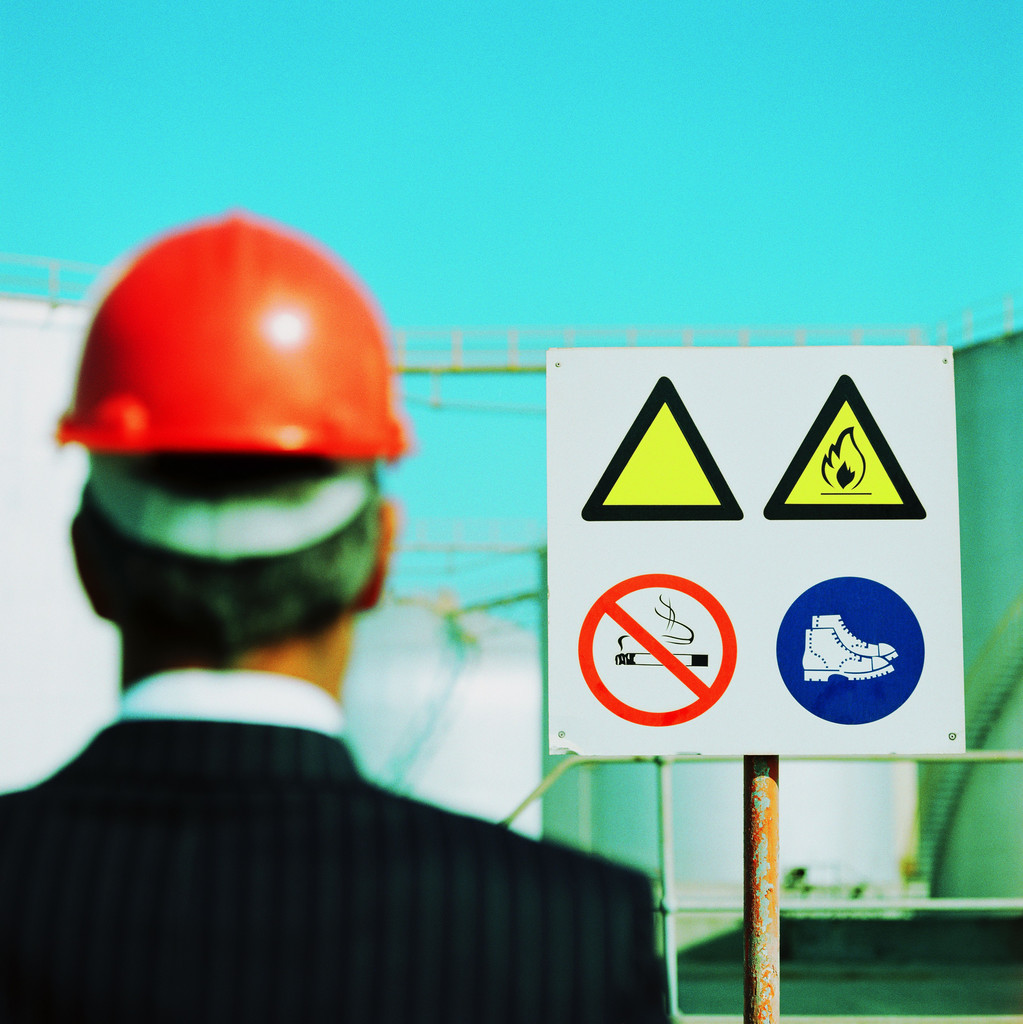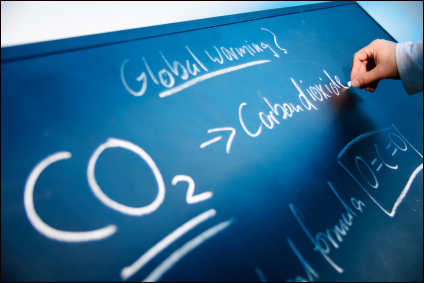Do you know what happened to any paints, coatings and surface preparation materials left over after the last project at your facility?
Audit, Compliance and Risk Blog
Got Paint? Complying With Hazardous Waste Regulations & Requirements
Posted by Jon Elliott on Fri, Nov 02, 2012
Tags: Business & Legal, Audit Standards, Health & Safety, California Legislation, Environmental risks, Environmental, Hazcom
GHG Auditing and Environmental Compliance — Are You Prepared?
Posted by Jon Elliott on Tue, Oct 16, 2012
Environmental compliance has been an important issue for large, multi-national companies for many years, and in recent years it has taken on added importance for their suppliers. Case in point: Walmart, Procter & Gamble, IBM – many Fortune 500 companies – are requiring that their vendors audit and quantify the greenhouse gas (GHG) emissions in their supply chains. Indeed, many of these high-profile organizations have undertaken ambitious plans for reducing their carbon footprint. (A big driver of this activity is stronger environmental regulation and pressure from environmental organizations, customers, investors and the like.) For example, in early 2010 Walmart announced a goal to eliminate 20 million metric tons of GHG emissions from its global supply chain by the end of 2015. Procter & Gamble has the stated objective of generating 100% of its energy from renewable resources – with a target of generating 25% of that by 2020.
Tags: Corporate Governance, Audit Standards, Health & Safety, Environmental risks, Environmental
Understanding Insurance Law (Rule Number One: Words Rule)
Posted by Barry Zalma on Fri, Sep 28, 2012
A picture may be worth a thousand words. But words – or lack thereof – can be worth millions. Never more so than when courts are deciding the level of coverage and the amount of payout policyholders are entitled to from insurance companies. So, when it comes to understanding insurance law you need to make sure you understand rule number one: words rule.
Tags: Corporate Governance, Business & Legal, Environmental risks, Environmental, Insurance, Insurance Claims
OSHA "Severe Violators": A Release from Enhanced Enforcement
Posted by Jon Elliott on Tue, Sep 25, 2012
The Occupational Safety and Health Administration (OSHA) establishes national standards that employers must meet in order to protect workers. Employers who fail to meet OSHA audit and compliance requirements are subject to enforcement actions by OSHA or delegated state agencies. Employers who perform the worst can be subject to OSHA’s Severe Violator Enforcement Program (SVEP), established in 2010 as the latest in a series of enhanced enforcement programs for those employers that OSHA considers the most dangerous and/or recalcitrant. SVEP has always offered the possibility that an employer can demonstrate its rehabilitation and exit the program, and just last month OSHA finally published clear guidelines for doing so.
Tags: Employer Best Practices, Health & Safety, OSHA, Environmental risks
Resource Extractors’ Payments – New SEC Rules Increase Transparency
Posted by Jon Elliott on Thu, Sep 20, 2012
This month the Securities and Exchange Commission (SEC) published new environmental compliance rules (Rule 13q-1 and associated Form SD), requiring annual disclosures by publicly listed “resource extraction issuers” of payments they make to the U.S. federal government, or foreign governments, related to commercial development of oil, natural gas or minerals. SEC’s rules implement a Congressional mandate contained in 2010’s massive Dodd-Frank Wall Street Reform and Consumer Protection Act (Dodd-Frank).
Tags: SEC, Environmental risks, Environmental, EPA
When RCRA Environmental Compliance Deters Innovative Waste Management Technologies
Posted by Jon Elliott on Fri, Sep 14, 2012
Environmental compliance can be a complex business. In fact, in certain situations, the Resource Conservation and Recovery Act (RCRA), and other legislation, may actually deter use of innovative waste management technologies and best practices. Here are three questions to ask about your organization:
Tags: OSHA, Environmental risks, Environmental, EPA, fracking
MAP-21 Impacts on Current Federal Motor Carrier Safety Regulations
Posted by Russ Boesch on Wed, Sep 05, 2012
On July 6, 2012, President Obama signed into law the “Moving Ahead for Progress in the 21st Century Act (MAP-21)”.The 584-page legislation revises and adds many sections to the U.S. Code, intending to “create a streamlined, performance-based, and multi-modal program to address the many challenges faced by the US transportation system, including improving safety, maintaining infrastructure condition, reducing traffic congestion, improving efficiency of the system and freight movement, and protecting the environment” (USDOT, Federal Highway Administration).
Tags: Health & Safety, OSHA, Environmental risks, Environmental, EHS, EPA, Hazcom, EEOC
Environmental Compliance: Hazardous Waste "Program in Place"?
Posted by Jon Elliott on Wed, Aug 29, 2012
If your business generates "hazardous" wastes, then you must manage them in compliance with applicable federal and state environmental laws and regulations. But did you know that the same regulations also require you to take steps to avoid generating such wastes in the first place? Regulations refer to these as "waste minimization" efforts.
Tags: California Legislation, Environmental risks, Environmental, EHS, EPA, Hazcom, effluent, EEOC
Hydraulic Fracturing: Can We 'Frack' Without Fouling the Environment?
Posted by Jon Elliott on Mon, Aug 13, 2012
Energy companies have used hydraulic fracturing—often referred to as ‘fracking’—since the 1940s in order to enhance recovery of oil and natural gas from low-permeability (“tight”) rock formations.
Frackers pump high-pressure fluids into rock formations to create and expand cracks and create pathways for valuable hydrocarbons to flow out. The stimulant fluids are usually water-based, with additional chemicals (acids, surfactants, biocides, etc.) to improve the effectiveness of the fracking process as well as solid ‘proppants’, which prop open the expanded openings (sand, etc.).
Tags: Health & Safety, Environmental risks, Environmental, EPA, fracking, hydraulic fracking
Greenhouse Gas Emissions: Answering Stakeholders Concerns
Posted by Jon Elliott on Fri, Aug 10, 2012
Increasingly, your approach to climate change issues provides an important basis for your customers’ and other stakeholders’ purchasing and investment decisions with your organization. They may research how your organization manages its greenhouse gas (GHG) emissions (your ‘carbon footprint’) because, if you provide them with goods and services, the GHG emissions associated with your activities may be attributed to them.
Tags: Corporate Governance, Environmental risks, Environmental, EPA







